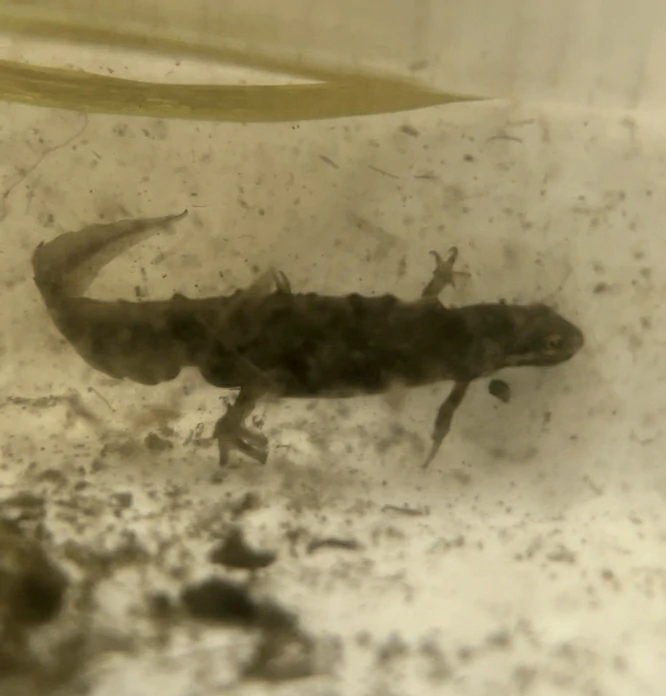Have you ever stood by a pond, watching the water ripple, and wondered if a newt could just float there like a duck? Newts spend a lot of time in the water, but do they really float, or do they sink?
Yes, newts can float, but it depends on what they’re doing. Sometimes they just drift at the surface, especially when they need air. Other times, they sink down and rest on the bottom. Knowing when to float and when to sink is very important for them.
Why Newts Are Good at Staying in Water
Newts are amphibians, which means they can live in both water and on land. Their bodies are shaped like tiny submarines: slim, smooth, and made to slide through water easily.
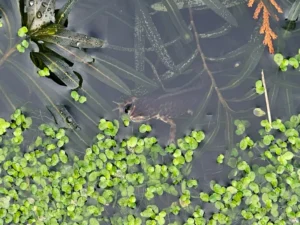
Their skin stays wet, their tails act like paddles, and their lungs and skin together let them breathe while swimming.
Because of this, newts don’t just plop into the water and sink like a rock. They can change their position depending on what they need at the moment.
Do Newts Float Like Fish Do?
You might wonder if newts float the same way fish do. Fish have a special organ called a swim bladder. It’s like a little balloon inside them.
By filling it with air or letting it out, fish can float or sink almost without trying.
Newts don’t have that. They use air in their lungs and small movements of their bodies to stay up or go down.
When a newt takes a deep breath, it holds more air and floats easier. Let the air out, and it slowly sinks.
Floating for a newt takes more work and control than for a fish.
When Do Newts Float?
Floating isn’t random. Newts do it at certain times:
-
Breathing: Newts need to rise now and then to take a breath. They often float quietly for a few seconds before diving down again.
-
Resting: Sometimes a newt will float with just its head above water, almost like it’s daydreaming. This lets it rest but stay ready for danger.
-
Feeding: When hunting small insects or worms near the surface, a newt may float and wait, then snap at its food.
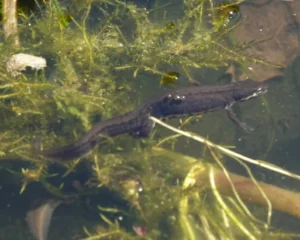
So if you see one floating, it’s not being lazy, it’s doing something important.
Why Don’t Newts Stay Floating All the Time?
It might seem easy, floating uses less energy than swimming. But for a newt, floating too much can be risky.
When it floats, predators like birds, snakes, or big fish can see it more easily. Sinking to the bottom hides it among plants, mud, and rocks.
Floating is useful, but only when the newt thinks it’s safe.
Can Baby Newts Float?
Baby newts, called larvae have gills instead of lungs at first. Gills let them breathe underwater, like tadpoles.
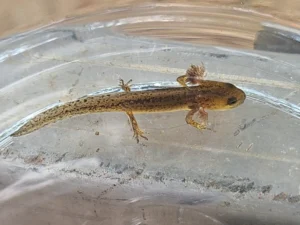
Because of this, they don’t need to float for air. They usually stay near the bottom or around plants where food is easy to find.
Once they lose their gills and grow lungs, they start floating like adults.
Do All Newts Float the Same Way?
Not every newt does the same thing:
-
Smooth newts often float at night when they come up for air quietly.
-
Eastern newts sometimes float during the day, especially in calm ponds.
-
Great crested newts are bigger and heavier, so they spend more time at the bottom and less time floating.
Each kind has its own habits, shaped by its size, body, and where it lives.
What Happens If a Newt Can’t Float?
Imagine a newt with weak lungs or that’s too tired to swim. Floating gets harder.
Sick or injured newts may sink more and struggle to reach the surface. That makes them easier to catch or even drown.
In captivity, keepers sometimes notice stressed or sick newts float in odd ways, tilted, upside down, or unable to dive. This is usually a sign the newt isn’t healthy.
Have You Seen a Newt Sitting Still in the Water?
If you watch closely, you might see a newt that looks like a statue underwater. It’s not floating, it’s “hovering.”
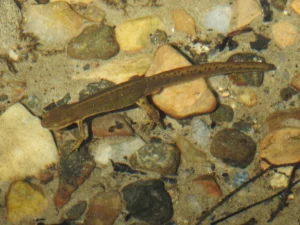
By holding air and staying perfectly still, it balances between sinking and floating, almost like it’s weightless.
This trick helps it stay invisible to prey and predators.
How Floating Helps Newts Through the Seasons
In spring, when ponds are busy with mating and egg-laying, newts float more. Males show off by swimming near the surface, waving their crests or tails.
In summer, floating helps them take in air when the water gets warm and low on oxygen.
In winter, newts usually stay at the bottom, buried in mud. Floating then could be dangerous because the cold air above could hurt them.
Do Newts Ever Get Stuck Floating?
It’s rare, but it can happen. Sometimes newts in still water with no plants find it hard to sink and rest.
Other times, if their skin makes too much mucus or tiny bubbles stick to it, they float awkwardly.
It usually doesn’t last long, but in tanks it can mean the setup isn’t quite right.
Conclusion
So, do newts float? Yes, but not like fish. Newts float by controlling air in their lungs and moving their bodies carefully.
They float to breathe, rest, or feed, but they don’t stay there long because floating makes them easier to see.
Baby newts with gills don’t float, but adults use it as a tool when they need it. Each kind has its own habits, but all balance floating and sinking as part of daily life.
Next time you see a newt floating, you’ll know it’s not random, it’s a peek at how carefully this little creature manages its life in the water.
Hi, my name is Ezra Mushala, i have been interested animals all my life. I am the main author and editor here at snakeinformer.com.

